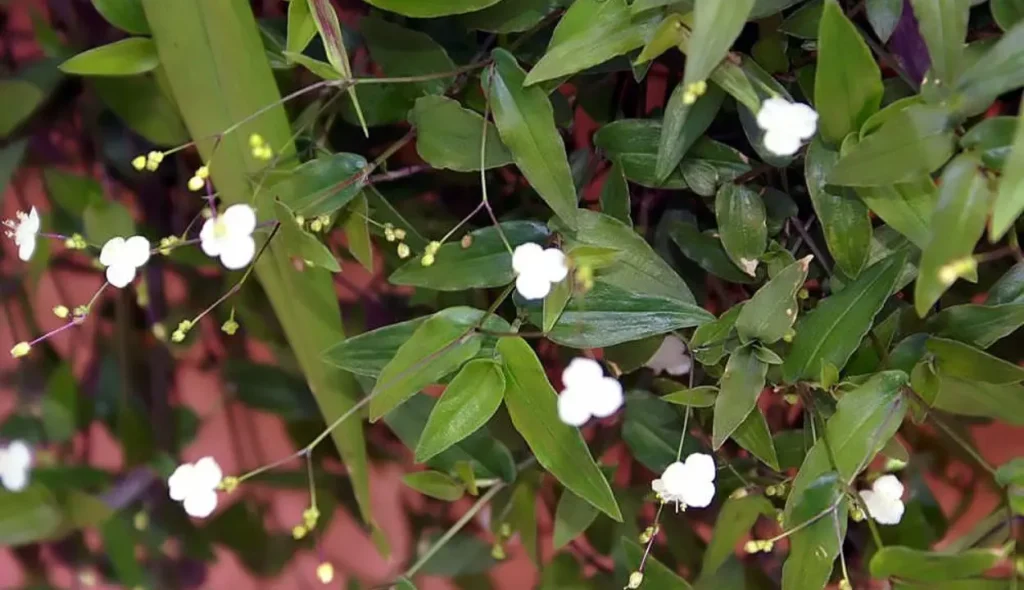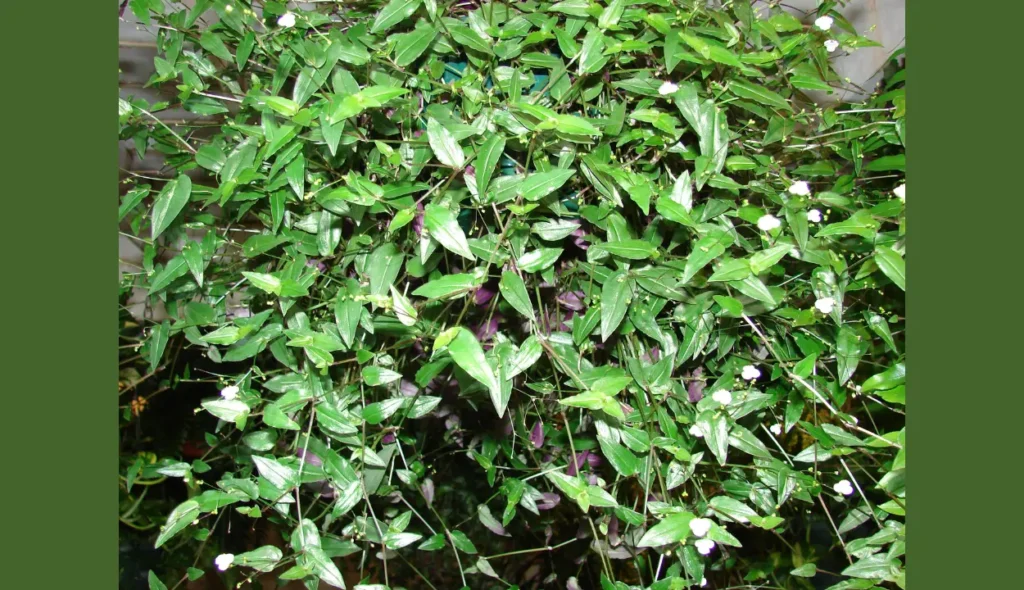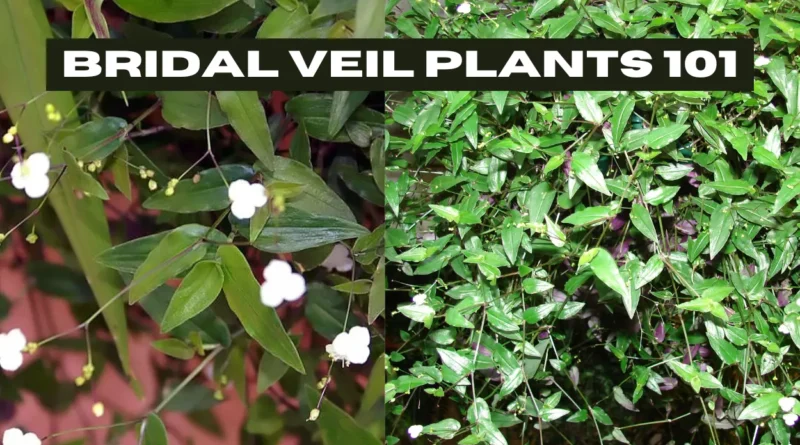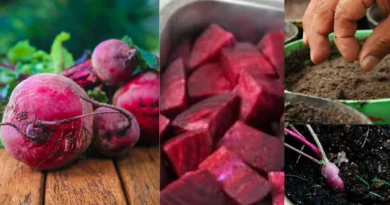Bridal Veil Plants 101|Tahitian Bridal Veil Care (2025)
Hanging Elegance: Tahitian Bridal Veil Plants Comprehensive Guide to Care
Bridal veil plants are popular hanging veils because of their beautiful leaves and flowers. Other name for this plant is the Tahitian bridal veil. The pointed lush green leaves with tiny white flowers look very elegant. When the flowers bloom it looks like the bridal veil as the name of the plant.
These plants and easy to grow and very low maintenance. In this article, we will discuss the complete information about these plants from propagation to caring.
Table of Contents
Appearance of Bridal Veil
Bridal veil plants have lush green pointed leaves and the size of the leaves is medium. Leaves have a fuzzy texture, which gives the plant a distinct appearance. The leaves may change color in the fall season. Similar to other hanging plants, the foliage of the bridal veil is valuable and flowers add an additional charm.
The plant has tiny white flowers appearing in groups along the arching branches which gives a look of a bridal veil. The color of flowers can also be pink. Bridal Veil trailing stems can grow to be many feet long depending on the pot size and other conditions.

Flowering Season of Bridal Veil Plants
The flowering season on the bridal veil can start from spring till late summers but it is not the exact time flowering can totally depend on the climate condition of your region.
More Information
| Scientific Name | Gibasis pellucida |
| Family | Commelinaceae |
| Native | South Africa |
| Plant type | House Plant |
| Flowering Color | White/Pink |
| Blooming time | Spring |
| Stem | Purple |
| Toxic | Yes |
How To Propagate?
It is very easy to propagate the bridal veil plants recommended methods for propagation is stem cutting and root cutting. You can grow many plants from both methods easily.
- Stem Cutting
Choose the young stem which has not turned into hardwood. The ideal time to grow from stem cutting is in spring. The length of the stem should be 4 to 5 inches. Cut the stem remove the lower leaves and leave only a few leaves on top. Cutting can successfully grow in normal soil. The soil should not be wet all the time but have only moisture. Another option for growing cutting is potting mix soil. After planting place the cutting in a shady but bright light area.
- Root Division
Select the mature plant for root cutting this method works effectively for plants that have developed a substantial root system. Take out the plant from pot carefully so that the root do not get damaged. Gently divide the roots into parts by hand. Each part should have a component of the root system as well as any connected shoots or stems.
Now, Plant the divided parts into separate pots or containers. Water the plants properly and maintain the moisture in soil. Place the plants in shady area for few days once they start growing you can place them in filtered sunlight.
Requirements of Bridal Veil Plants
- Light Requirement:
The bridal veil plants normally grows successfully in partial shady area. In winter you can place the plants in full sunlight because of less sunlight intensity. In summer full-day sunlight can cause burn on leaves.
If you are growing indoor then place the plants near the window where they get bright light. Bridal veil plants should not be planted in severe shadow as this can cause sagging growth and fewer flowers.
- Water Requirement:
The bridal veil plants grow successfully in moist soil but avoid overwatering because it can cause root rot. In summer you will need to water the plants regularly. In winter only water the plants when you see the upper soil dry.
Based on the weather, modify the watering schedule. Overwatering can increase the risk of fungal diseases in these plants.
- Temperature Requirement:
Bridal veil plants like warm weather. The plant temperature requirement to grow successfully is from 12° to 25°C. If the temperature drops or exceeds the limits you can put the plants indoor.
These plants can go into stress from extreme weather conditions. The appearance of plants can be impacted by sudden and extreme temperature changes
- Fertilization Requirement:
Bridal veil plants have specific fertilization needs to support their growth and flowering. Use a balanced fertilizer NPK 20-20-20 in early spring or when the new growth starts. Read the instructions and dosage properly on the pack of fertilizer before using. Avoid over-fertilization it can cause leaf burn.
You can also use organic matter to provide the necessary nutrients which include compost and aged manure. The organic matter will enhance soil structure and release nutrients gradually.
Apply the fertilizer after every three months. Make sure the soil has moisture before using fertilizer for optimal results. Stop fertilizing the plants when winter starts because the dormancy period starts. The new growth is almost stopped or slowed down so the plant does not need fertilizer at that time.
- Soil Requirement:
The bridal veil plants grow successfully in well-draining soil because overwatering can cause root rot and fungal attacks on plants. Adding organic matter to soil will improve the soil structure. These plants prefers slightly acidic to neutral soil which ranges from 5.5-7.
You can conduct the soil test to know about the current pH of the soil and take the further steps accordingly. A balanced and appropriate pH produces an environment in which plants can absorb nutrients properly, supporting healthy growth.

Pruning of Bridal Veil Plants:
Pruning promotes the health of plants and enhances the overall look. Pruning once a year is enough for these plants. After the plants finish flowering you can prune the plants. Start pruning by removing the spent flowers.
Cut the stem which is damaged and has a disease attack. Cut the overcrowded stems to promote air circulation. Trim the long stems according to your desired shape.
Common Issues of Bridal Veil Plants:
The common issues include fungal attacks, yellow leaves, aphids, and root rot. The main reason for these issues can be overwatering. There are other reasons also but 80 percent of issues occur when you overwater the plants. Water the plants carefully as explained above.
Another reason that causes yellow leaves is nutrient deficiency. Lack of light might also cause these issues for your plants.
Conclusion
Bridal veil plants have lovely cascades which add a beautiful touch to a garden. You can grow these plants easily in your garden whether are a beginner after reading this article. You can propagate from one plant to many plants.
These plants require some care to increase their beauty. You can enjoy the display of these stunning blossoms by understanding their demands and resolving any problems.
FAQS
What is the ideal temperature range for growing Bridal Veil plants?
Bridal Veil plants like to grow in warm weather. The temperature for growing these plants 12°C to 25°C. Extreme temperature changes can stress the plants, so if temperatures drop or exceed these limits, consider moving them indoors.
What soil type is suitable for Bridal Veil plants?
Bridal Veil plants grow successfully in well-draining soil. These plants prefer slightly acidic to neutral soil which ranges from 5.5-7. Adding organic matter improves soil structure. Conduct a soil test to determine the current pH and adjust accordingly.
How often should Bridal Veil plants be pruned?
Prune Bridal Veil plants once a year after flowering. Remove spent flowers, damaged stems, and overcrowded growth. This promotes air circulation and enhances overall plant health.
How often should Bridal Veil plants be fertilized?
Apply a balanced fertilizer (NPK 20-20-20) in early spring or when new growth starts. Fertilize every three months, ensuring soil moisture before application. Stop fertilizing during winter dormancy when new growth slows down.
How should Bridal Veil plants be watered?
In summer you will need to water the plants regularly. In winter only water the plants when you see the upper soil dry. Based on the weather, modify the watering schedule.




